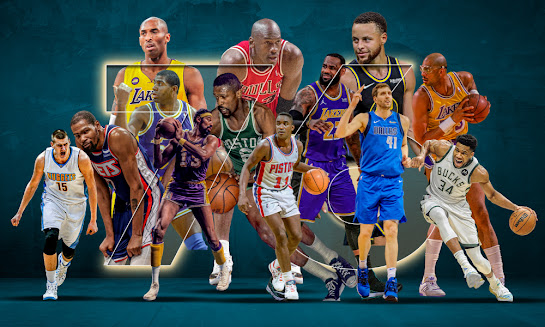From an irregular leather-panelled ball to today's modern equipment, Basketball has evolved a long way since its inception. Have you ever wondered how this beloved sport evolved from a simple indoor game to a global phenomenon?
Origins and early development
1891, Dr. James Naismith, A physical education instructor at the YMCA training school in Springfield, Massachusetts invented basketball. He undertook a task to create an indoor game to keep his athletes in shape during the harsh New England winters, taking inspiration from other sports to develop a new contact-free game.
The first official basketball game was played on December 21, 1891 with a football and two peach baskets nailed to the balcony of the gymnasium. There were thirteen drafted rules, in contrast to the ones we have today.
|
Original
Rules |
Modern
Adaptations |
|
No dribbling |
Dribbling allowed |
|
No moving with the ball |
Limited steps allowed |
|
Baskets at 10 feet high |
Rim height unchanged |
Basketball's Popularity soon began to grow due to its excitement. By 1893, it had reached New York, Philadelphia, Chicago and Denver.
James Naismith, Founder of Basketball.
The sport's adoption by educational institutions helped to foster its development and popularity.
Evolution of playing styles
In the early years of basketball, the playstyle was slow and deliberate. But, as the rules evolved and coaches and players recognised the advantage and need of a quicker tempo, fast-break offense emerged. This allowed teams to capitalise on turnovers and missed shots by quickly pushing the ball up court. This fast-break offense was also incorporated due to the introduction of the 24-second violation.
Shooting techniques also evolved over time, leading to the introduction of Set shots, Jump shots, Three-pointers and Fadeaway shots.
Defensive strategies were also adopted to counter the new offenses, such as the Man-to-man defense, zone defence, Full-court pressing and Help defense.
Around the 80's, a variant of basketball where there were 3 players on each side and only a half-court to play, called 3x3 Basketball was invented out of informal "streetball" tradition. The game focused on speed, versatility, and agility more than on the endurance and methodical tactics of traditional 5x5 basketball.
In Today's modern era, players combine strength, speed and skills to perform spectacular dunks, alleys and blocked shots that were once considered impossible.
Changes in Equipment and court
One of the objects that has undergone the most change during the evolution of the sport is the basketball itself. Initially, footballs were used to play, but soon purpose-made balls for the sport replaced them.
|
Era |
Material |
Features |
|
1890s |
Leather panels |
Laced, irregular shape |
|
1940s |
Molded leather |
Smoother surface, better bounce |
|
1970s |
Synthetic materials |
Improved grip, consistent performance |
|
Present |
Composite leather |
Advanced moisture control, optimal feel |









